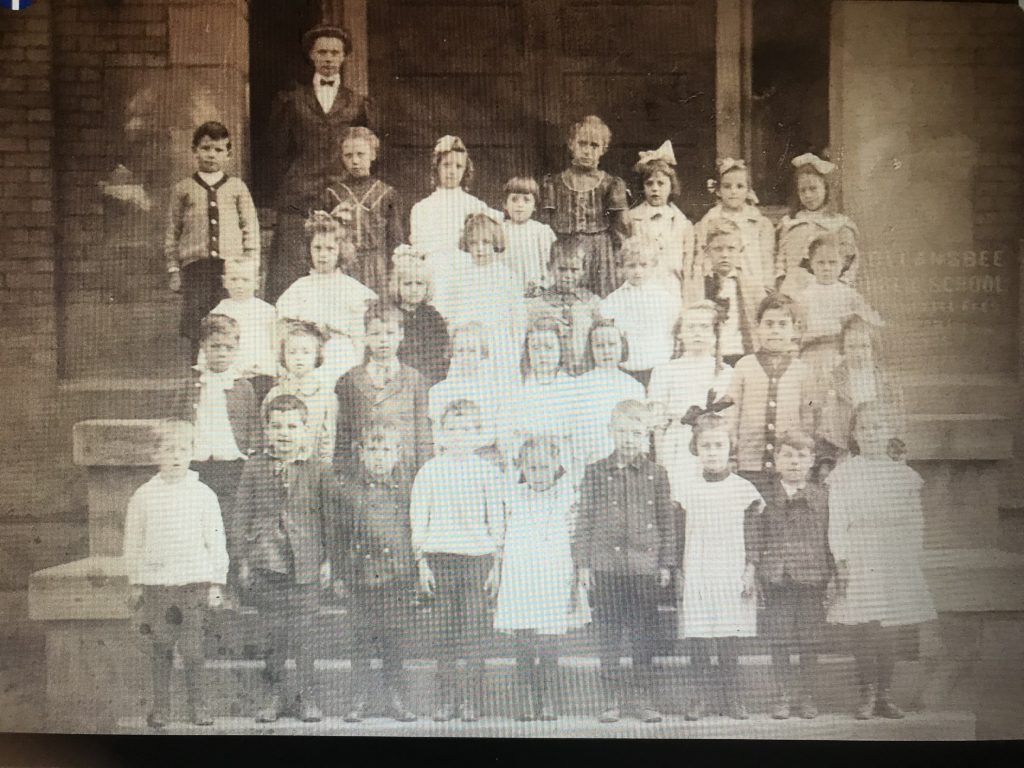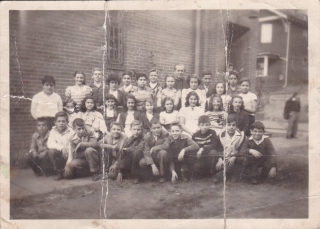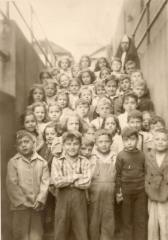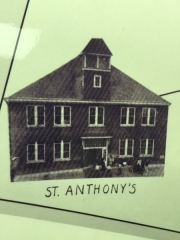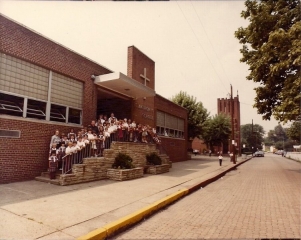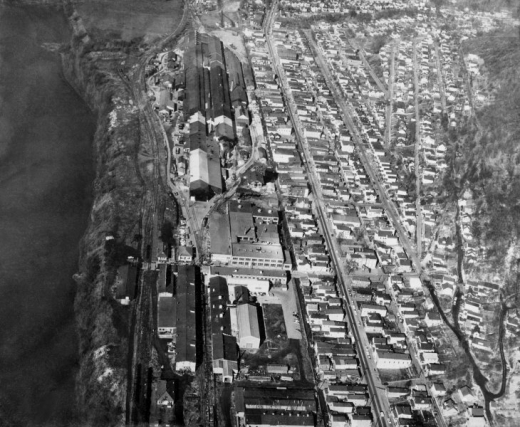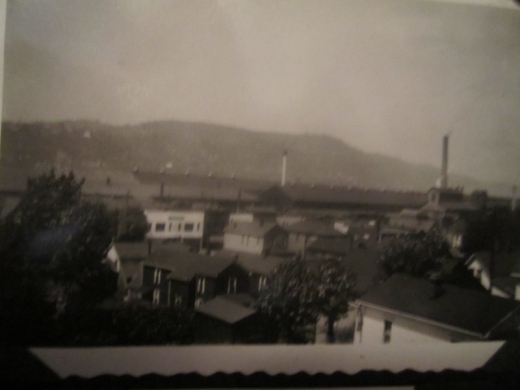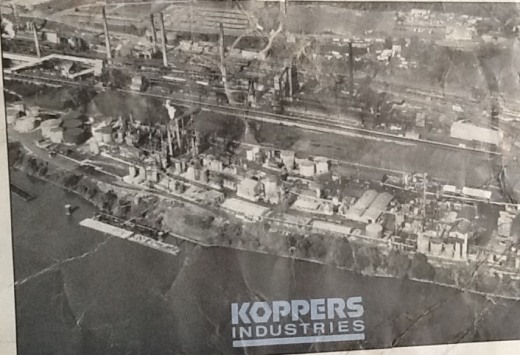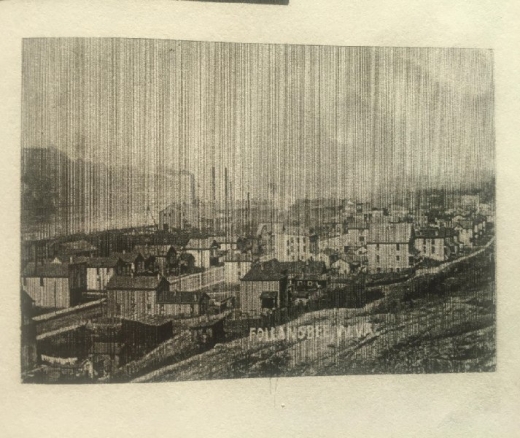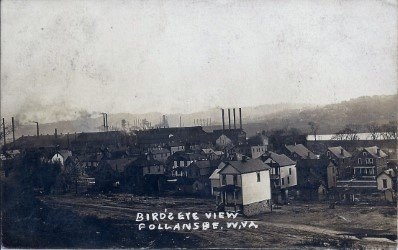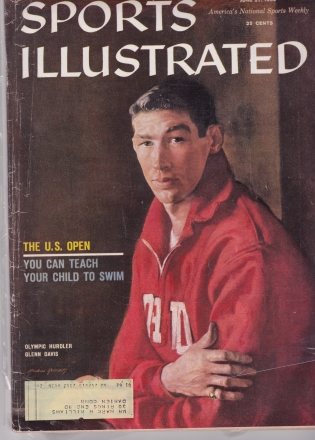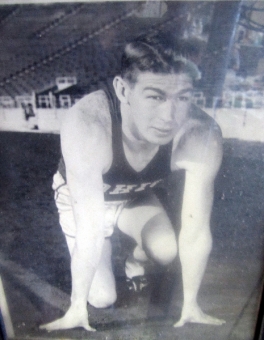Follansbee High School Football Coaches
*1910 -1918 – George Hubbs (1884-1973) – Hubbs was the first coach of athletics and first high school principal. According to folk stories, he organized the first football team in 1910 against Mingo. However, the 1914 team was the first to officially represent FHS. Earlier teams existed but included players not in school. The first official football schedule was established with the 1917 squad. Also in 1917, Hubbs coached Walter “Red” Mahan, who later was an All American at WVU. The first baseball team was formed in 1911, and the basketball team in 1916. George Hubbs graduated from West Liberty Normal School in1907.
*1919-1920 – Herschel R. Ice – Ice was the football and basketball coach while also principal. His team traveled to Burgettstown by train to open the 1919 season with a scoreless tie. FHS lost its first home game against New Cumberland 20-0. The game at Toronto ended in the third quarter. With Follansbee leading 6-0 Toronto claimed they scored a touchdown as time ended the quarter. The dispute ended the contest. The 1920 team was the first to beat arch-rival Wellsburg on the Blue & White home field at Pastime Park along the river. The score was 6-0.
*1921 – Paul “Monk” E. Hager (1895-1995) – Hager came to FHS after being selected to 1917 All American football team as an end from WVU. His huge popularity engaged the school’s male enrollment to play football. During Hager’s era, the big game of the year was against Mingo, referred to as the “Turkey Day Classic,” on Thanksgiving Day. His team was the first to play Tridelphia winning 41-0. Follansbee also defeated archrival Wellsburg 7-0. Hager played a role in the first football banquet on December 10, 1921, sponsored by city busters known as the “21 Club.”
*1922 – Fred Stewart – Stewart’s 1922 team finished 7-2, losing only to Wheeling and Moundsville. His boys outscored the opposition 205 to 20 points in the first six games and defeated Toronto 61-7. Stewart’s basketball team went to the 1922 finals of the WV State Tournament losing to Parkersburg 24-18. Fred Stewart attended Bethany College where he played basketball and was a celebrated Bison quarterback.
*1923 –1925 – Harry F. Sweeny (1899-1964) – Sweeney’s 1923 team was first to represent the new Cross Creek District High school, referred to as FHS. The city paper described the1923 team as the “Largest Grid Squad in FHS History” with 30 candidates. The team included the first Colliers boys to play for FHS as a result of the construction of the consolidated district high school in 1922-23. The 1924 team was the first to play Weirton, defeating the Red Riders 21-0, and tying Weirton 0-0 in 1925. Harry Sweeney was inducted into the Hall of Fame at Susquehanna University (PA) and later posthumously inducted into the West Liberty Hall of Fame as a “Hilltoppers” football coach 1n 1982.
*1926 – T.W. Caskey – His 1926 Blue & White team was the first to play on the new athletic field behind the high school. The first game, against New Cumberland, ended in a scoreless tie. Neither team gained more than five first downs on a rain-soaked field with no draining system. The dedication of the field was delayed until 1928. George Roark, who became the FHS coach in 1929, coached the New Cumberland team in the 1926 mud fest. T.W. Caskey was a stand-out football player at Milligan College (TN).
*1927-1928 – Howard “Stump” Fredericks – Coach Fredericks took over the reigns at FHS on September 15, 1927. His team resumed grid relations with Wellsburg following some years of heated county rivalry disputes. No games between the two Brooke rivals were played during1924 -1926. Fredericks resumed the series winning in 1927 6-0 and 1928 38-0. Signature victories for Fredericks 1927 team were over Weirton 18-0 and Irondale 54-0. Howard Fredericks later became a prominent Wheeling attorney and competitive sportsmen in tennis circles.
*1929 – George W. Roark (1898-1993) – Roark’s 1929 team was undefeated until losing the final game to arch-rival Wellsburg 6-0. Captain Herbert Minnis intercepted a pass to defeat Weirton 6-0. Roark’s team outscored their opponents 211-24 points and finished the season 8-1-1. George Roark was inducted into the Bethany College Football Hall of Fame in 1925
*1930-1931 – Earl B. Zook – Zook’s two-year career at FHS closed with the 1931 season with three tie games against Wheeling 0-0, Worwood 0-0, Wellsburg 6-6, and losses to Mingo 2-0, South Hills (PA) 6-0, Weirton 12-0 and Tiltonsville 45-0. Zook’s victories were against Tyler-Middlebourne 79-0 and Chester 41-7. The Zookmen played one of the toughest schedules in school history. South Hills lost only one game and won the championship of Pittsburgh. Weirton was the district champions. Earl Zook played football and basketball at Bethany College.
*1932-1933 – Elmer McGraw – McGraw’s 1933 team lost only two games. Students referred to McGraw as a “miracle man” after his 1933 underdog team beat the Red Riders at the old Cove Field in Weirton 7-6. He graduated from FHS and was on George Roark’s1929 team. McGraw was a tackle at Geneva College.
*1934 -1938 – Harry F. Sweeney (1899-1964) – Sweeney began his second coaching era at FHS having left in 1925 to teach and coach at West Liberty State College. At West Liberty Sweeney compiled an outstanding record of 46-14-3. During his seven-year run, the Hilltoppers gained national prominence.
Returning to FHS in 1934, Sweeney’s efforts to establish a regional reputation were complicated by matchups with regional powerhouses and especially losing records. His 1937 team won only two of eleven games, and the 1938 team dropped its first five starts. Even though disappointing seasons, the fans loved him. A Follansbee Review article (March 11, 1937) praised Sweeney, “We like his form of coaching. It’s the old Follansbee spirit back again. Sweeney’s remarkable coaching career ended in 1938 at Follansbee.
*1939 –1944 – Burdell “Jimmy” Carey (1906-1977) – Carey’s 1939 team defeated arch-rival Wellsburg 53-6, and completed the season with a 7-2-1 record. Joe Chorba (captain) and Mutt Lombardi represented Carey’s team in the first WV-Ohio All-Star game in 1940. Victor Bonie’s, “educated toe,” won two games over Benwood and Warwood 3-0 by kicking field goals. During the first 1939 game at Weirton, Robert Donell a Red Riders lineman crashed into the Blue & White line head-on with Chorba. Donell was fatally injured and died. Two movies of the 1939 Follansbee vs. Mingo and Wellsburg games can be viewed on YouTube. Carey was inducted into the West Liberty Hall of Fame in 1981.
*1945 –1949 – Mac Bowles – Bowles won the OVAC Class A championships in 1947, 1948, and 1949. His 1945 team defeated Steubenville Big Red in a rainstorm 6-0. His 1948 team was 9-1. Tony Paesano, who later coached both St. Anthony and Follansbee high, was on Bowles 1947 team. Mac was president of the OVAC 1949-1950 and coached the 1950 WV team in the OVAC All-Star game. Mac played football at Davis & Elkins College.
1950 -1951 – Argue E. “Gus” Winter (1908-1952) – His undefeated 10-0 team won the 1950 OVAC Class A championship. No opponent scored more than 7 points against the 1950 squad. Zigzag sensational running back and team captain, Paul “Whitey” Mikanik, was selected for the All-State team. Winter’s overall record was 18-1-1, the best winning percentage in FHS history, and the 1950 defense the best in school history allowing only 19 points all season. In 1952, Winter’s unexpected death at 44 of a heart attack shocked the city and ended his outstanding coaching career. “Gus” Winter was a sports star at Davis & Elkins College.
*1952 –1962 – William “Doug” Stone (1911-1962) – Stone won the 1954 West Virginia Class AA championship defeating Barboursville 7-6. The 1954 team is considered the best of all time with an 11-0 record. Stone’s basketball team reached the State tournament finals at Morgantown the same year. Stone coached three WV teams in the OVAC All-Star games between 1954-1956. At Salem College, he was an All-WV Conference football player 3 consecutive seasons and rated by sportswriter Grantland Rice among the best backs in the East in 1935. Stone was posthumously inducted into the Salem College Hall of Fame in 1984. He died of a heart attack in Follansbee, May 1962 at 51.
*1962 –1968 – Denny Williams – Coach Williams’s 1963 Blue Wave defeated Wintersville 30-18 spoiling the Warrior’s perfect season. His 1964 team, beefed up with 13 transfers from Follansbee St. Anthony, inflicted a bitter defeat on Weirton 13-12. He coached five All-State players: Verland West, Bob Sebeck, Jack Kostur, Tom Moorhead and Tim Anderson. Anderson later became an All-American at Ohio State. Another standout was Ron Sebeck who went on to fame at Virginia Tech. Williams co-captained the FHS football team and graduated in 1952. He was an athletic at West Liberty and received his Master’s degree from WVU.
*1969 – Anthony “Tony” Paesano – was the final FHS football coach. His team finished the season 4-1-5. Vincent Rea was the assistant coach. Larry Hood and Charles Barnhart were selected to play in the WV-Ohio All-Star Game. Impressive wins were over Toronto 43-0, Martins Ferry 29-9, Oak Glenn 29-0, and Triadelphia 15-0. The team lost against old rivals Weirton 7-6 and Wellsburg 39-12. Tony was also the first coach at Follansbee St. Anthony High School winning the OVAC Class A championship in 1958. Tony graduated from FHS in 1947 and played college football at Duquesne University. In 1988 he was inducted into the Duquesne University Hall of Fame.

